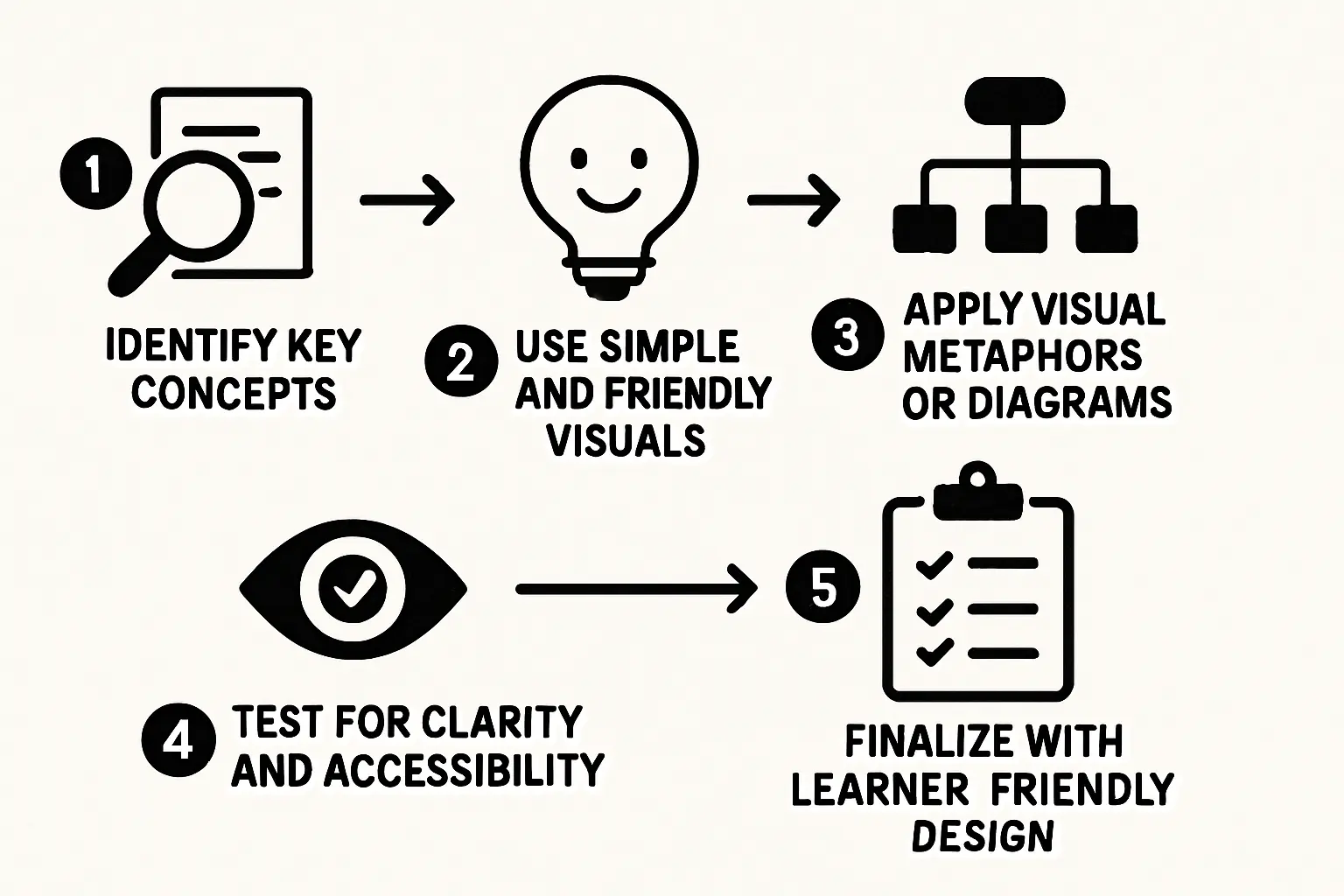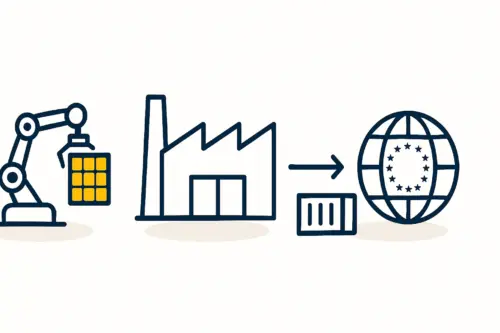For an established industrialist, an underutilized or aging factory can be a significant liability. Yet, in the rapidly expanding renewable energy sector, that same structure can become a powerful strategic asset.
The challenge lies in bridging the gap between a traditional industrial past and a high-tech manufacturing future. This isn’t a theoretical possibility—it’s a proven pathway into the solar industry. A compelling example from Turkey, where a former textile factory was successfully converted into a state-of-the-art solar module production plant, shows what’s possible.
This article outlines the structured process for such a transformation, covering the essential phases of facility assessment, production line integration, and workforce retraining to meet the growing global demand for clean energy.
The Strategic Rationale for Facility Conversion
The global energy landscape is undergoing a fundamental shift. According to the International Energy Agency (IEA), global solar PV manufacturing capacity is set to more than double by 2024. However, the supply chain remains highly concentrated, creating a clear incentive for nations to develop local production capabilities and enhance their energy security.
This global trend is mirrored by powerful regional growth. In the MENA region alone, solar capacity is projected to expand from 15 GW to over 40 GW by 2025, creating immense demand for locally produced solar modules. For entrepreneurs and business leaders, this represents a significant market opportunity.
Converting an existing facility offers several distinct advantages over building from scratch:
-
Reduced Capital Outlay: Leveraging an existing building shell, utility connections, and site infrastructure substantially lowers the initial investment. A comprehensive analysis of the solar factory cost often reveals significant savings in civil engineering and permitting.
-
Accelerated Time-to-Market: Bypassing lengthy greenfield construction timelines allows a new manufacturing operation to become productive much faster, often within 9 to 12 months.
-
Sustainable Redevelopment: Repurposing existing structures is an environmentally responsible approach that revitalizes industrial assets and preserves local employment.
The Conversion Process: A Phased Turnkey Approach
Successfully converting a traditional factory into a modern solar plant requires meticulous planning and execution. A turnkey solar manufacturing model provides a structured framework that manages every detail, from initial assessment to full-scale production.
Ready to make big Profits?
The solar Industry is Booming
WE HELP NEWCOMERS to the solar industry start their own solar module production line. Customers can make BIG PROFITS by selling modules and finding investors, without wasting money and time on things they don't need!
Phase 1: Facility Assessment and Planning
The first step is a rigorous technical audit of the existing facility. This is a detailed analysis to determine the building’s suitability for a precision solar panel production line. Key assessment criteria include:
-
Structural Integrity: Verifying that floor loading capacity can support heavy machinery like laminators and testers.
-
Internal Dimensions: Ensuring adequate ceiling height (typically a minimum of 6–8 meters) and a large, unobstructed floor area for an efficient production layout.
-
Utilities and HVAC: Assessing the capacity of the electrical supply, water connections, and compressed air systems. A climate-controlled, dust-free environment is critical for quality module production.
This assessment forms the foundation for the project’s layout and engineering design. A detailed architectural plan is then developed to map the flow of materials and optimize equipment placement, serving as a critical input for a full plan on how to start a solar panel business.
Phase 2: Integrating the Production Line
With the planning complete, the focus shifts to physical integration—preparing the building and installing the specialized manufacturing equipment.
Necessary civil works may include reinforcing floors, upgrading electrical panels, or installing new HVAC and air filtration systems. Once the site is prepared, the manufacturing equipment is installed, calibrated, and commissioned.
For projects in regions with high ambient temperatures and solar irradiation, such as the Middle East and Africa, specialized equipment is essential. J.v.G. Technology’s DESERT+ production line, for instance, is engineered for reliable, high-yield performance in arid and hot climates, ensuring the modules produced are optimized for their target markets.

Phase 3: Workforce Training and Skill Transition
One of the most common concerns for industrialists entering a new high-tech field is the availability of skilled labor. A key advantage of a conversion project is the opportunity to retrain an existing workforce, preserving local jobs and institutional knowledge.
Workers from industries like textiles, automotive parts, or electronics already possess transferable skills in process management, quality control, and machine operation. A structured training program bridges this knowledge gap and typically involves:
-
Classroom Instruction: Covering the fundamentals of photovoltaic science and manufacturing principles.
-
Hands-On Equipment Training: Practical, on-site instruction led by experienced engineers on operating and maintaining each machine.
-
Quality Assurance Protocols: Instilling a deep understanding of the quality control checkpoints required to produce certified, bankable solar modules.
This approach not only solves the labor challenge but also fosters strong community support for the new enterprise.
A Case in Point: The Turkish Textile Factory Transformation
The transformation of a former textile factory in Turkey is a powerful real-world example. Faced with shifting market dynamics, the owners decided to pivot their industrial assets toward a future-proof industry.
The project began with a comprehensive assessment of the existing 10,000-square-meter facility. J.v.G. engineers designed a custom layout to accommodate a 50 MW production line. The conversion involved upgrading the electrical infrastructure and installing a clean-room environment suitable for semiconductor-grade manufacturing.

The most remarkable aspect was the human element. The factory’s former textile workers underwent an intensive retraining program, applying their skills to new roles as solar production technicians, quality inspectors, and line operators. Today, the facility is a thriving solar module plant, supplying the growing regional market and standing as a testament to the viability of industrial conversion.

Frequently Asked Questions (FAQ)
-
How long does a factory conversion project typically take?
While every project is unique, a typical turnkey conversion can be completed in 9–12 months, from initial assessment to the start of production. This is significantly faster than the 18–24 months often required for a new greenfield construction project. -
Is any industrial building suitable for conversion into a solar factory?
No. Key prerequisites include a minimum ceiling height of 6 meters, high floor-loading capacity (especially for the lamination area), and access to a stable and sufficient power supply. A professional feasibility study is essential to determine suitability. -
What are the main cost differences between a conversion and a new build?
The primary savings in a conversion project come from avoiding major civil engineering works, land acquisition, and lengthy permitting processes. The existing building shell and utility connections represent significant upfront capital, avoiding that initial outlay. -
Can an existing workforce truly be retrained for high-tech manufacturing?
Absolutely. Experience from numerous J.v.G. turnkey projects shows that with a structured, professional training program, a motivated workforce can successfully adapt its skills. Core principles like process discipline, attention to detail, and quality control are transferable across many industries.
Summary and Next Steps
Converting an existing industrial facility is a financially prudent, strategically sound, and rapid path into the solar module manufacturing market. It transforms a potentially underperforming asset into a productive engine for growth in the renewable energy sector.
This process allows business leaders to leverage their existing infrastructure and workforce, answering the global call for diversified, localized solar production. With expert guidance and a turnkey process, the journey from a traditional factory to a modern solar plant is not only possible—it’s a proven model for success.
If you are considering such a project, the next step is a deeper analysis of the financial and operational requirements for your specific facility and market. Contact our team to explore the potential of your industrial assets.






